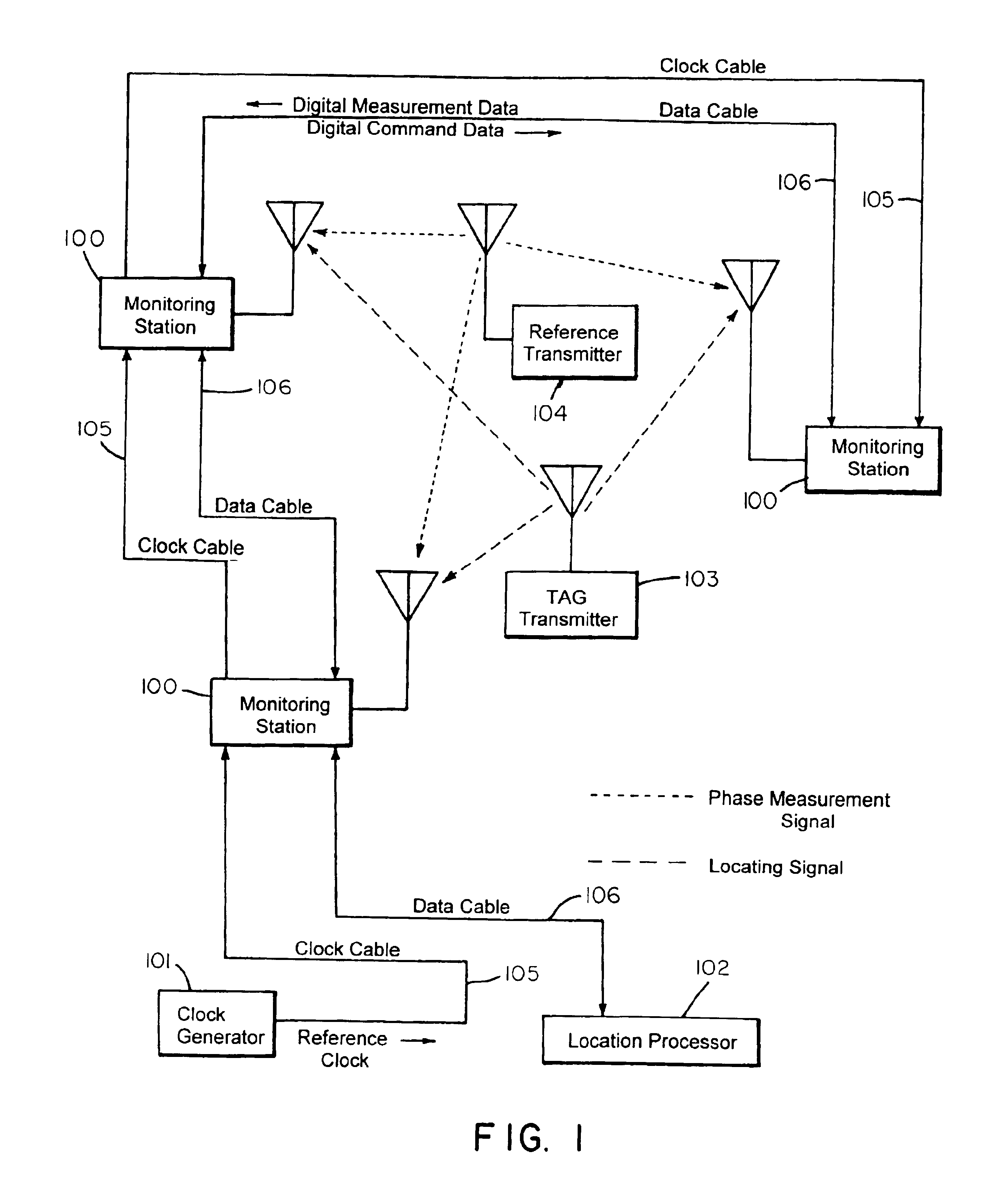Object location system and method
a technology of object location and object location, applied in the direction of direction finders, instruments, measurement devices, etc., can solve the problems of small differences in clock frequencies, inability to determine the location of objects, and signal dispersion in cables, etc., and achieve the effect of high-quality position measurements
- Summary
- Abstract
- Description
- Claims
- Application Information
AI Technical Summary
Benefits of technology
Problems solved by technology
Method used
Image
Examples
Embodiment Construction
[0031]FIG. 1 shows a radio frequency locating system useful for determining the position of an object. The object to be located has an associated transmitter 103, preferably an UWB transmitter, that transmits a TOA timing pulse, and optionally, an information packet that may include, but not limited to, ID information and a sequential burst count. At least one other transmitter, depicted as reference transmitter 104, is positioned within and / or about a monitored region.
[0032]One or more (preferable three or more) monitoring stations 100 are also positioned at predetermined coordinates within and / or around the monitored region. These monitoring stations sense signals transmitted by the object tag 103 and reference transmitter 104. Each of the monitoring stations 100 includes a receiver for receiving transmissions (preferably UWB transmissions), and preferably, a packet decoding circuit that extracts a TOA timing pulse train, transmitter ID, packet number and / or other information that...
PUM
 Login to View More
Login to View More Abstract
Description
Claims
Application Information
 Login to View More
Login to View More - R&D
- Intellectual Property
- Life Sciences
- Materials
- Tech Scout
- Unparalleled Data Quality
- Higher Quality Content
- 60% Fewer Hallucinations
Browse by: Latest US Patents, China's latest patents, Technical Efficacy Thesaurus, Application Domain, Technology Topic, Popular Technical Reports.
© 2025 PatSnap. All rights reserved.Legal|Privacy policy|Modern Slavery Act Transparency Statement|Sitemap|About US| Contact US: help@patsnap.com



